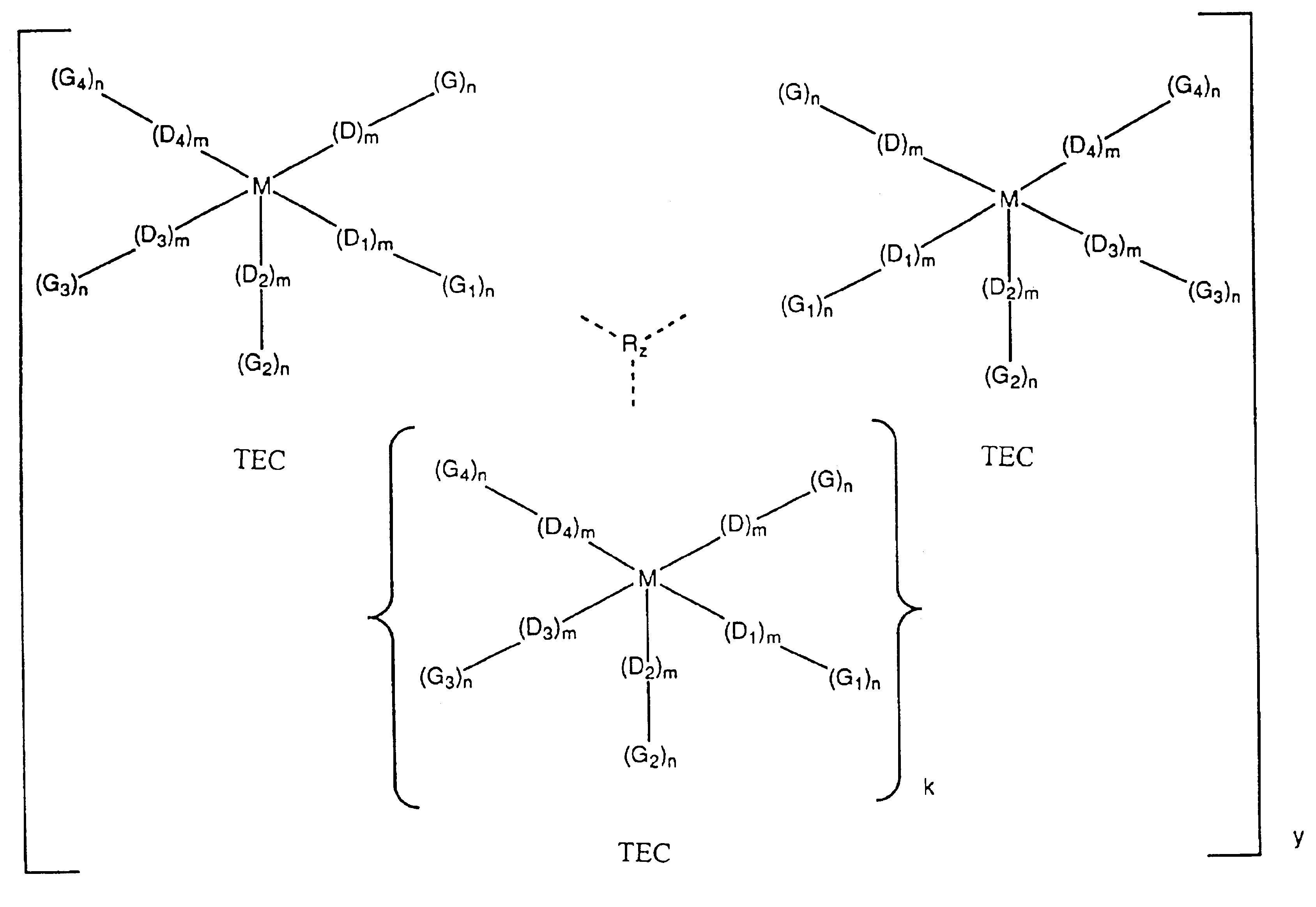Intermolecularly bound transition element complexes for oxygen-selective adsorption
a transition element and complex technology, applied in the field of intermolecularly bound transition element complexes for oxygen-selective adsorption, can solve the problems of insufficient oxygen capacity, slow reaction rate, and one or more of the known approaches in the art for the use of tecs, and achieves stable, porous coordination framework, and facilitates the formation of improved adsorbents. , the effect of high oxygen capacity
- Summary
- Abstract
- Description
- Claims
- Application Information
AI Technical Summary
Benefits of technology
Problems solved by technology
Method used
Image
Examples
example 1
Co{Me2Ac2H2 malen}(4-PyOLi)
[0111]A. Preparation of Co(Me2Ac2H2malen)
[0112]In a glove box under a nitrogen atmosphere, NaOH (16.0 g) was dissolved in 200 mL of methanol with heating and stirring. CoCH3(CO2)2-4H2O (49.8 g) and the chelating ligand prepared by condensation of two equivalents of 3-ethoxymethylene-2,4-pentanedione with one equivalent of 1,2-diaminoethane were placed in a 1000-mL Erlenmeyer flask, 300 mL of methanol was added, then the mixture was heated. As soon as the cobalt salt dissolved (ligand remains suspended), the NaOH solution was added dropwise with continued heating and vigorous stirring. A brown precipitate formed during the addition of NaOH resulting in formation of a slurry. After complete addition of the NaOH, an orange micro-crystalline product was obtained. The resulting mixture was heated and stirred for another hour before it was cooled to room temperature. The mixture was stirred and the supernatant, which contained some insoluble impurity, was decant...
example 2
Co{Me2Ac2H2 maltmen}(4-PyOLi)
[0130]A. Preparation of Co(Me2Ac2H2maltmen)
[0131]In a glove box under a nitrogen atmosphere, H2(Me2Ac2H2maltmen) (0.396 g, 1.18 mmol) (prepared using methods well known to those skilled in the art) and Co(CH3CO2)2.4H2O (0.295 g, 1.18 mmol) were dissolved in 15 mL of methanol with heating and stirring. NaOH (0.092 g, 2.3 mmol) in 10 of mL of MeOH was added dropwise with stirring to obtain an orange solution. The solution was heated and stirred for another hour and then allowed to cool. The resulting precipitate was filtered, washed with MeOH, and dried under vacuum. Additional solid product was formed in the filtrate and was dissolved by heating, then solvent was slowly removed by evaporation to give plate-shaped crystals. These crystals were collected by filtration, washed with MeOH, and dried under vacuum. The total yield including both initial isolated solid and material isolated from filtrate: 0.27 g (0.94 mmol) or 80%.
[0132]B. Preparation of Co(Me2Ac...
example 3
Co(Me2Ac2H2maldmen}(4-PyOLi)
[0155]A. Preparation Co{Me2Ac2H2maldmen}
[0156]In a glove box under a nitrogen atmosphere, Co(CH3COO)2.4H2O (249 g, 1.00 mol) and the ligand (310 g, 1.006 mol), prepared by condensation of two equivalents of 3-ethoxymethylene-2,4-pentanedione with one equivalent of 2-methyl-1,2-diaminopropane, were added to methanol to obtain a suspension (1.3 L). The mixture was heated to near boiling for 1 hour, and some orange precipitate formed. NaOH (80.0 g, 2.0 mol) in 550 mL of MeOH was slowly added into the above solution under stirring over a period of 10 minutes. After addition of NaOH, the mixture was heated at 50° C. for 1.5 hour and then cooled to below 40° C. The supernatant was decanted, and the orange microcrystalline product was filtered, washed with MeOH (3×100 mL), and dried in the glove box. Weight: 349.98 g (0.96 mol). Yield: 96%.
[0157]B. Preparation of Co{Me2Ac2H2maldmen}(4-PyOLi)(EtOH)
[0158]LiOH (0.5 g, 0.0209 mol) and 4-hydroxypyridine (2.00 g, 0.02...
PUM
| Property | Measurement | Unit |
|---|---|---|
| Pressure | aaaaa | aaaaa |
| Pressure | aaaaa | aaaaa |
| Pressure | aaaaa | aaaaa |
Abstract
Description
Claims
Application Information
 Login to View More
Login to View More - R&D
- Intellectual Property
- Life Sciences
- Materials
- Tech Scout
- Unparalleled Data Quality
- Higher Quality Content
- 60% Fewer Hallucinations
Browse by: Latest US Patents, China's latest patents, Technical Efficacy Thesaurus, Application Domain, Technology Topic, Popular Technical Reports.
© 2025 PatSnap. All rights reserved.Legal|Privacy policy|Modern Slavery Act Transparency Statement|Sitemap|About US| Contact US: help@patsnap.com



